This is a review of the Pearl River 4. But first a little Chinese camera history. The first TLR to be manufactured in China was the Shanghai TLR by the Shanghai Camera company. It was heavily influenced by the Rolleiflex / Rolleicord of it’s time and was produced from 1960 to 1964. This camera was the forerunner of the Seagull range of TLRs, which have only recently been discontinued.
The Chinese ignorance of copyright infringement meant that a number of additional camera makers were set up manufacturing TLRs based on the Shanghai / Seagull / Rolleiflex design, these included:
Five Goats
Hongmei (Red Plums)
Hua Zhong
Quindao
Tanjin
Wuhan Youyi
and
Pearl River
Amongst others, TLRs were also produced in the former British colony of Hong Kong. Little information exists about these cameras apart from the Seagull because of it’s international sales and extended production run.
The definitive book about Chinese cameras is “Cameras of China” by Douglas St Deny published by Jessops in 1989. It lists a large number of the cameras produced and provides minimum details on them, including a Chinese Leica IIIf copy and a Hasselblad copy. It can be hard to find but turns up on eBay from time to time.
Production continued throughout the cultural revolution in China (1966-76), and in fact was encouraged as the government of China wished to show that they were capable of fine work equivalent to anyone else’s. (The Hasselblad copies were supplied to visiting Heads of State and Ambassadors as a boxed set of camera and three lenses, consequently they are very rare. It is thought that less than 200 sets were produced. Apparently, each one was completely handmade and assembled as they could not get the production line to function with enough accuracy. This project was one driven personally by Mao Zedong’s wife)
In China, these TLRs were considered “professional” cameras due to their cost. A Shanghai 4 or Seagull 4A cost around 290 Yuan and the monthly income of most workers then was 20 Yuan per month. Unfortunately, I have been unable to ascertain the selling price of the Pearl River 4, but it certainly would be in the same order.
Family portraits were taken by a photographer in a studio, my recent visits to China, last in 2018, showed portrait studios and professional photographers still flourishing then, albeit with modern digital cameras.
The Pearl River, from which the camera takes its name, is the third longest in China. It passes through the city of Guangzhou in Guangdong Province.
Pearl River cameras were manufactured at the Pearl River Camera Manufactory in Kwangzhou (Guangzhou). Two variants appear to have been made, The Pearl River 4, and the Pearl River 4-S. There appear to have been upgrades made at various times to both models and I would assume the Pearl River 4 was the original earlier model which was later either replaced or sold alongside the more featured 4-S. I base this on the use of more plastic parts in the 4-S, company name changes on the instruction manuals for these cameras, and the use of Kwangzhou as the city name in the case of the Pearl River 4 camera, this being the older spelling of the name. The 4-S manual lists the maker as Pearl River Camera Factory in Guangzhou, a more modern reference.
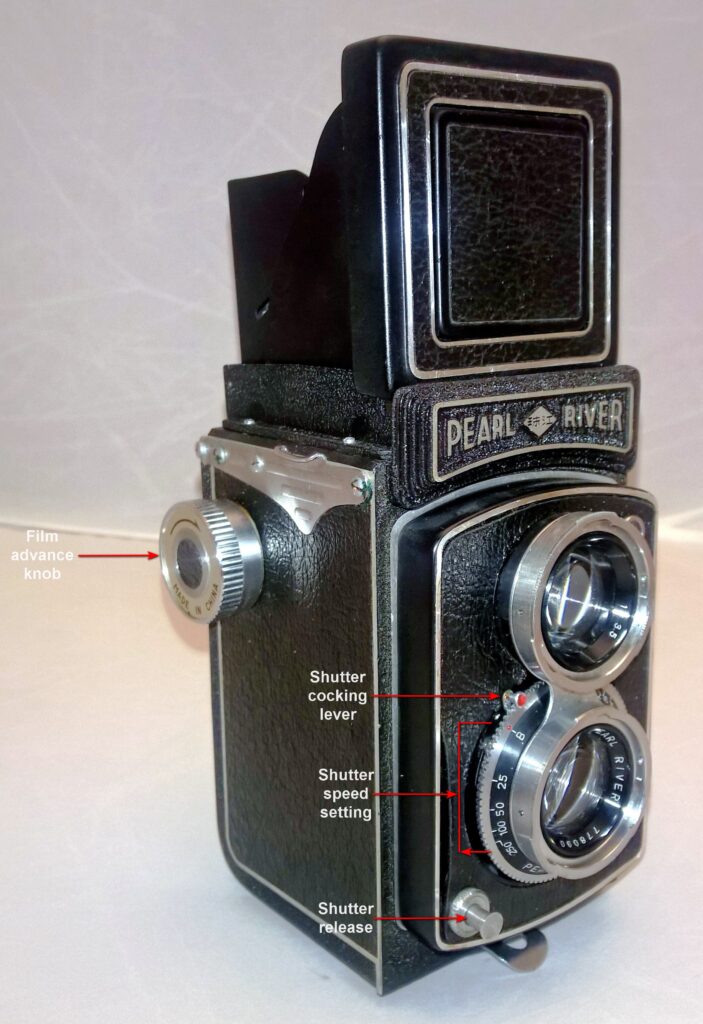
The Pearl River 4 Camera
The Pearl River 4 is a development of the Five Goats TLR, which itself is a descendent of the Shanghai 4 camera, and as such it only shoots 6cm x 6cm negatives, has no accessory shoe, uses a Leica type cable release which can be fitted after removing a decorative ring around the shutter release and has shutter speeds from 1/25 to 1/250 second plus a B setting. The shutter has to be cocked by hand before each exposure.
This particular camera comes equipped with a 75mm focal length f3.5 viewing lens and a 75mm focal length, f3.5 to f22 taking lens with a minimum focussing distance of 3.5 feet or 1 metre. The taking lens may either be a Cooke triplet or a Tessar type lens, without disassembly I do not know, but both types of these lenses were in use on Chinese TLRs. Both the viewing and taking lenses are single coated, having a purplish tinge to them. It is not known to be a radioactive type but only the taking lens has the makers name engraved on the bezel. Both the viewing and taking lenses have Bay 1 filter mounts having 38mm outer and 33mm inner bayonets (as found on Rollei TLRs). Over time the filter mounts changed some having a Bay 1 mount on the taking lens and a thread on the viewing lens and some having both lenses having threaded mounts.
I purchased the camera from an eBay seller in 2017 for £48, complete with it’s leather folding case. I went through a phase of looking for Chinese TLRs at the time as they were turning up reasonably priced. Today in 2024, Chinese TLRs (other than Seagull) are running well over £150 regularly and Seagulls can be considerably more expensive. The resurgence in film usage has forced prices up by a considerable margin. I have never had the luck to find anything at flea markets and welfare stores don’t exist in the parts of the world where I have lived.
This Pearl River 4 has the makers name and lens serial number only on the taking lens, I have seen others with similar markings on both lenses. Lenses appear to have been ground in house.
It has been said that the first two digits of the serial number represent the year of manufacture, however that does not appear to be the case as the lens serial number starts 77 and the body serial number starts 74. It could be that the taking lens has been upgraded at some time with a Tessar lens as kits were available for this or that the Pearl River logo plate has been lost or damaged at some time and replaced with one from a different camera.
The Pearl River logo plate has a raised diamond in between the words Pearl and River with the camera name engraved in Chinese characters – this would indicate that the camera was a home market camera and not an export model. Export models do not bear the diamond logo.
The camera itself has a well-constructed feel to it and is quite heavy. The majority of the parts are metal, with the main body and lens plate being die castings. The back cover is of pressed steel construction and quite heavy gauge. The closing mechanism is typical of the type but has no safety lock.
Film winding is by the knob on the right hand side of the body, and is not interlocked with the shutter, it has a single red viewing window in the centre of the back to view the printed numbers on the film backing paper. A nice touch is the cover for the window to ensure that even sensitive colour films are not exposed to light through the back except when winding on. As it is not interlocked, care has to be taken not to unintentionally make multiple or blank exposures.
Focussing is carried out by turning the knob on the left hand side of the body. It is marked in both feet and metres and has a depth of field indicator. A film type reminder is fitted to the focusing knob. The image is presented in the waist level finder reversed from left to right as is normal for this type of camera on a ground glass screen having an approximately 1cm grid engraved heavily into it. I find it a little dim and vignetting occurs around the edges. A modern replacement ground glass screen would probably help. A flip out magnifying loupe is provided for critical focussing, along with a “sports” finder, accessed when the viewing hood is open by pressing in the centre panel.
A clockwork self-timer is also included with a delay of approximately 10 seconds. A standard PC socket is provided to connect to an external flash which is synchronised at all shutter speeds.
Note that on my model the shutter release is a solid button, a Leica type cable release is needed for remote operation. Later models had a hollow shutter release that accepted the normal taper threaded cable release.
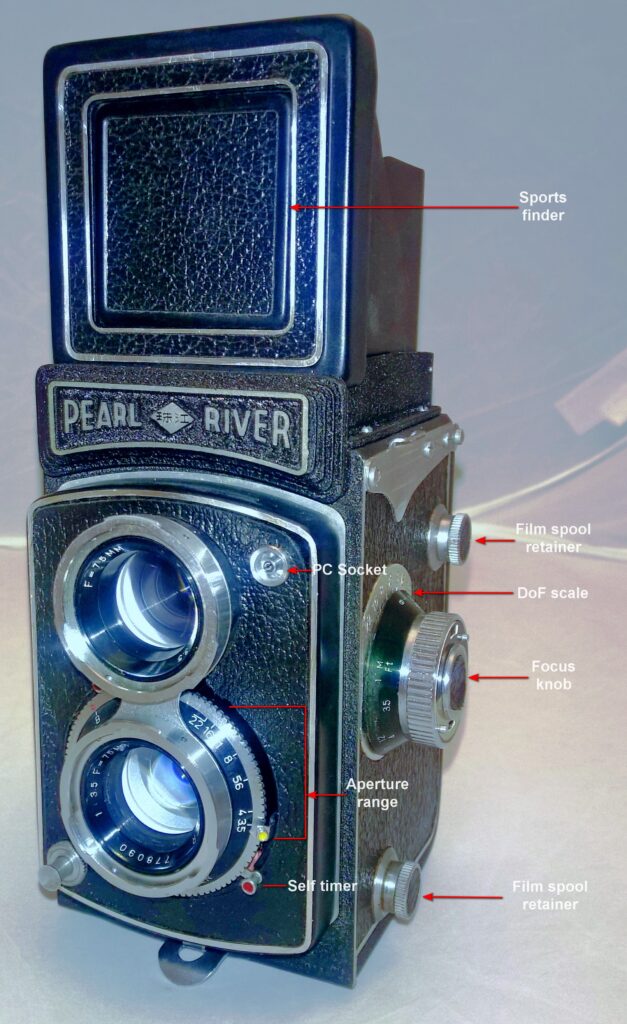
Using the Pearl River 4
The Pearl River 4 is an example of a typical TLR. Film runs from bottom to top and the spools are retained by sprung pins on the left hand side of the body. My example’s winding spool holder seems a little tight particularly when the spool is full after finishing the roll. Film runs over the lens cavity on steel rollers.
After installing the film and securing the leading-edge tab on the wind on spool the back is closed and locked. The window over the red viewing port centre back is opened and the film is advanced until a 1 appears in the window. The window is then closed, and the camera is ready for it’s first exposure.
Being accustomed to SLRs and rangefinder cameras I found the most awkward thing about using the camera was actually holding it during the process of focussing and taking a picture! The film is wound on with the knob on the right, but is focussed with the knob on the left, the shutter cocking lever is on the right as is the shutter release which requires much shuffling from hand to hand to achieve!
Having set up all the controls and cocked the shutter it is then time to frame the image, the lateral inversion which takes place is relatively easy to adjust for and becomes second nature fairly rapidly but avoiding camera shake during release is not helped by the slowness of the action on pressing the shutter release and how the camera has to be held, cradled in the hands. It also is very easy to catch the shutter cocking arm as it travels back to its resting position with the finger that was used to fire the camera – I have done that a number of times which results in a) overexposure and b) possibly a blurred image if the camera happens to be moved whist the shutter is still open.
The taking lens does produce some very nice images, barring user error. It is relatively straightforward to use once the necessary sequence of events is understood and after running a couple of films through it, I was pleased with its performance. Please judge for yourself from the images taken with it below.
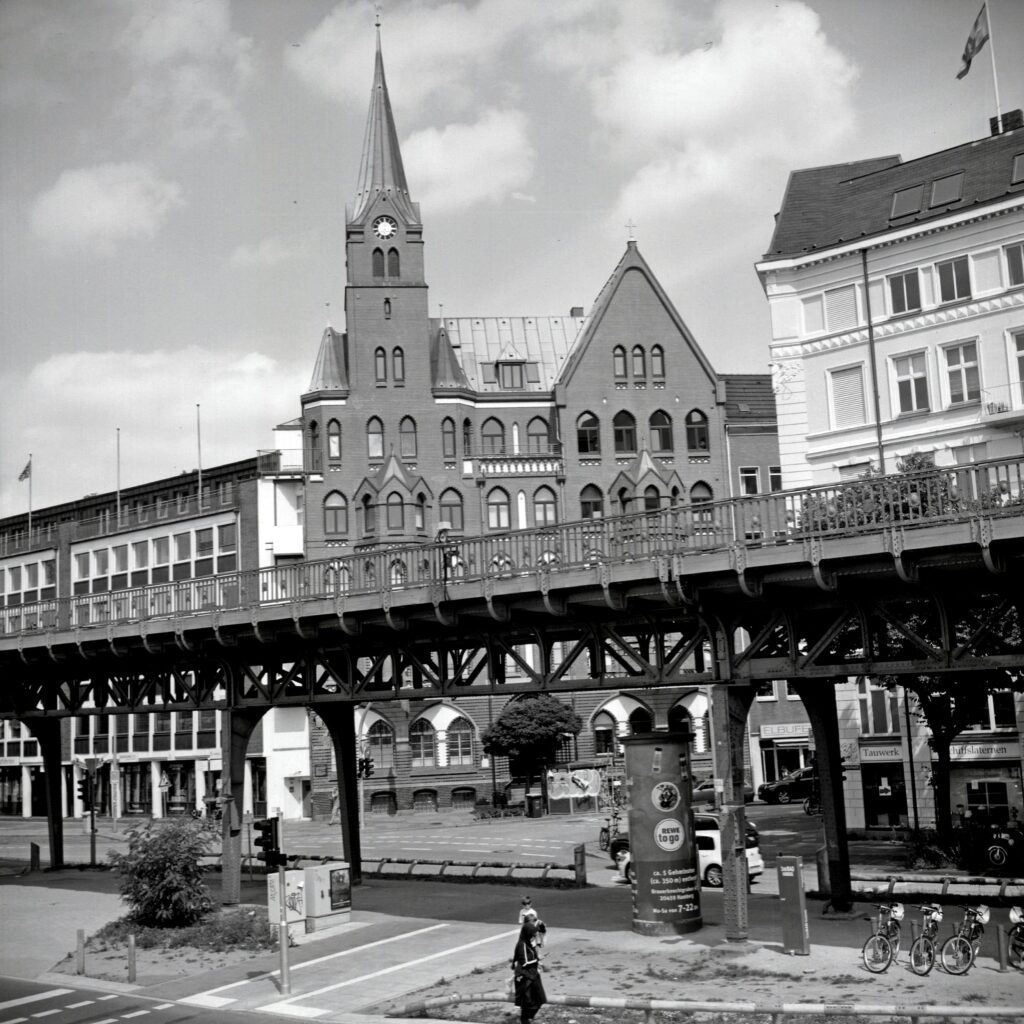
Delta 100 film exposed at 100ISO using a Hanimex PR-3 lightmeter from 1965ish. Processed in Kodak HC-110 dilution b.
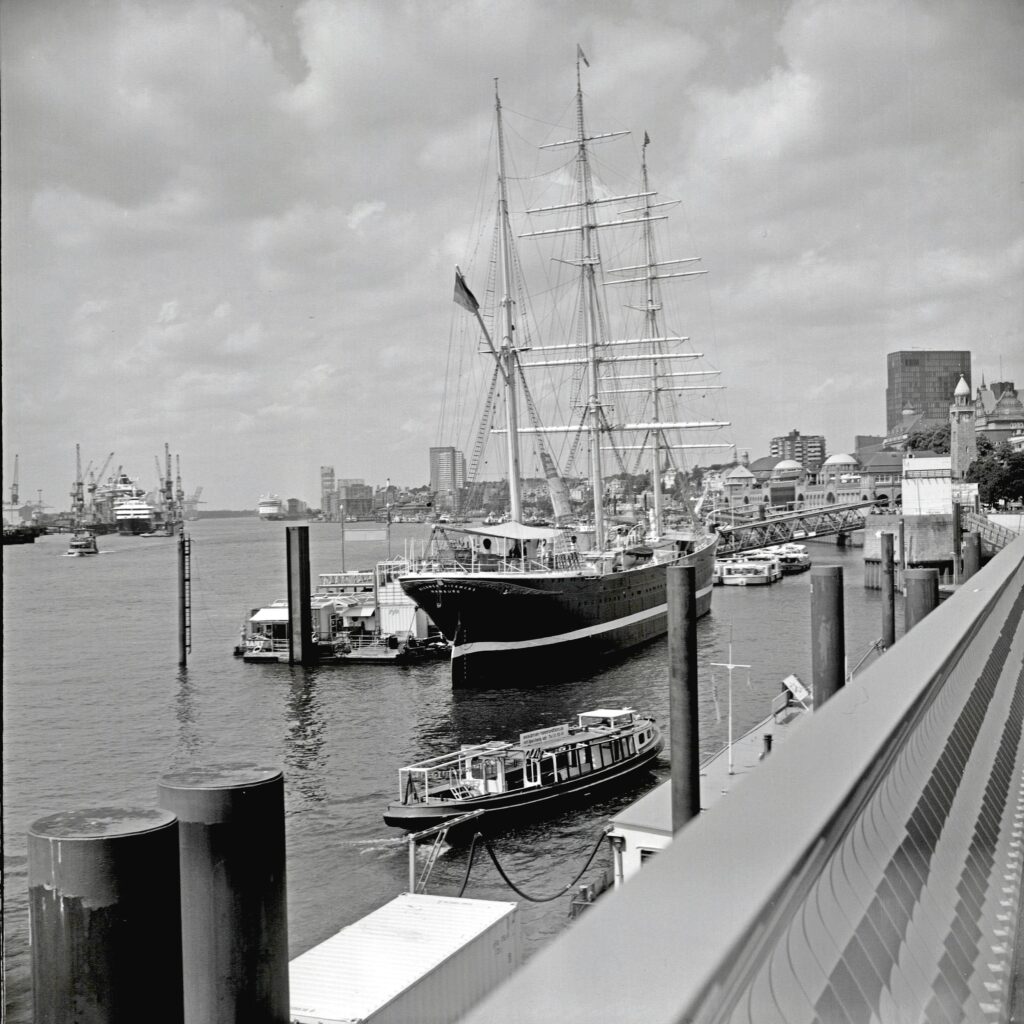
Delta 100 film exposed at 100ISO using a Hanimex PR-3 lightmeter from 1965ish. Processed in Kodak HC-110 dilution b.
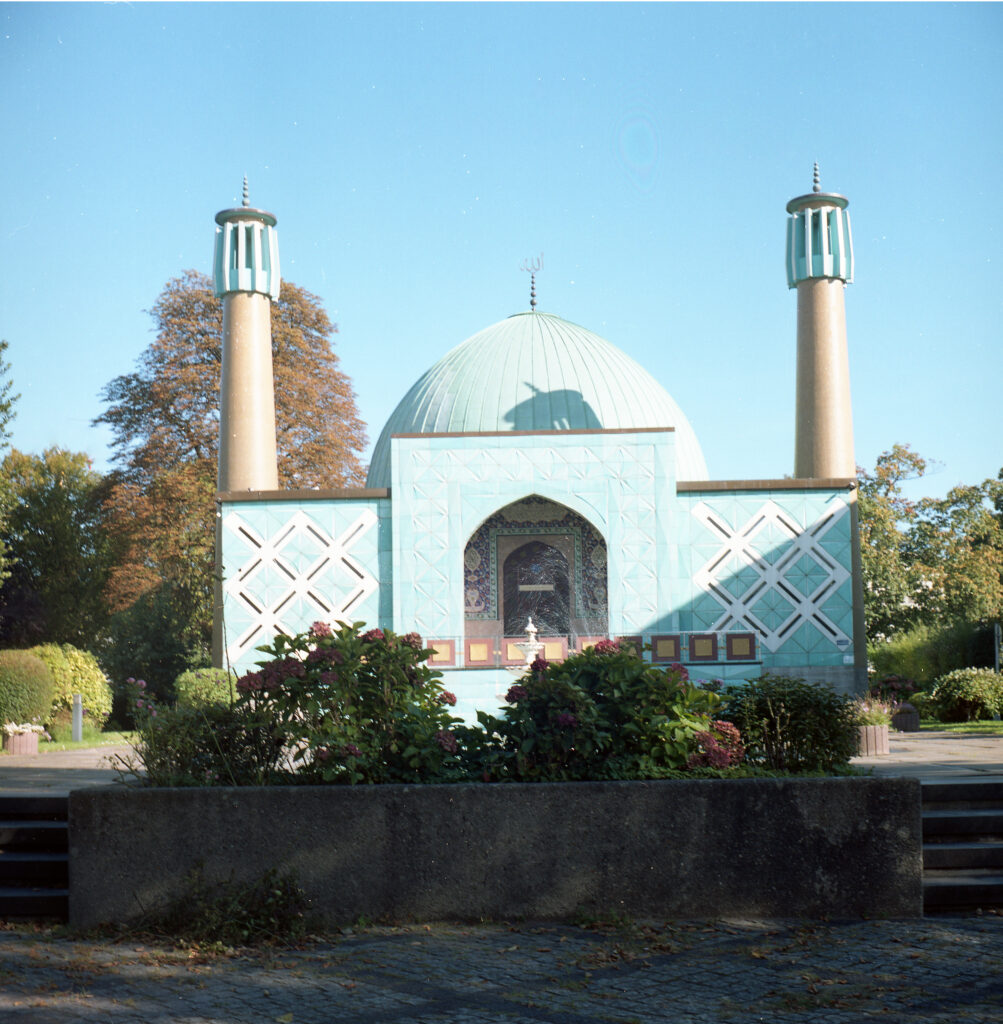
Kodak Portra 160. Processed C-41 Fuji Frontier Scanned Plustek OpticFilm 120 mk I
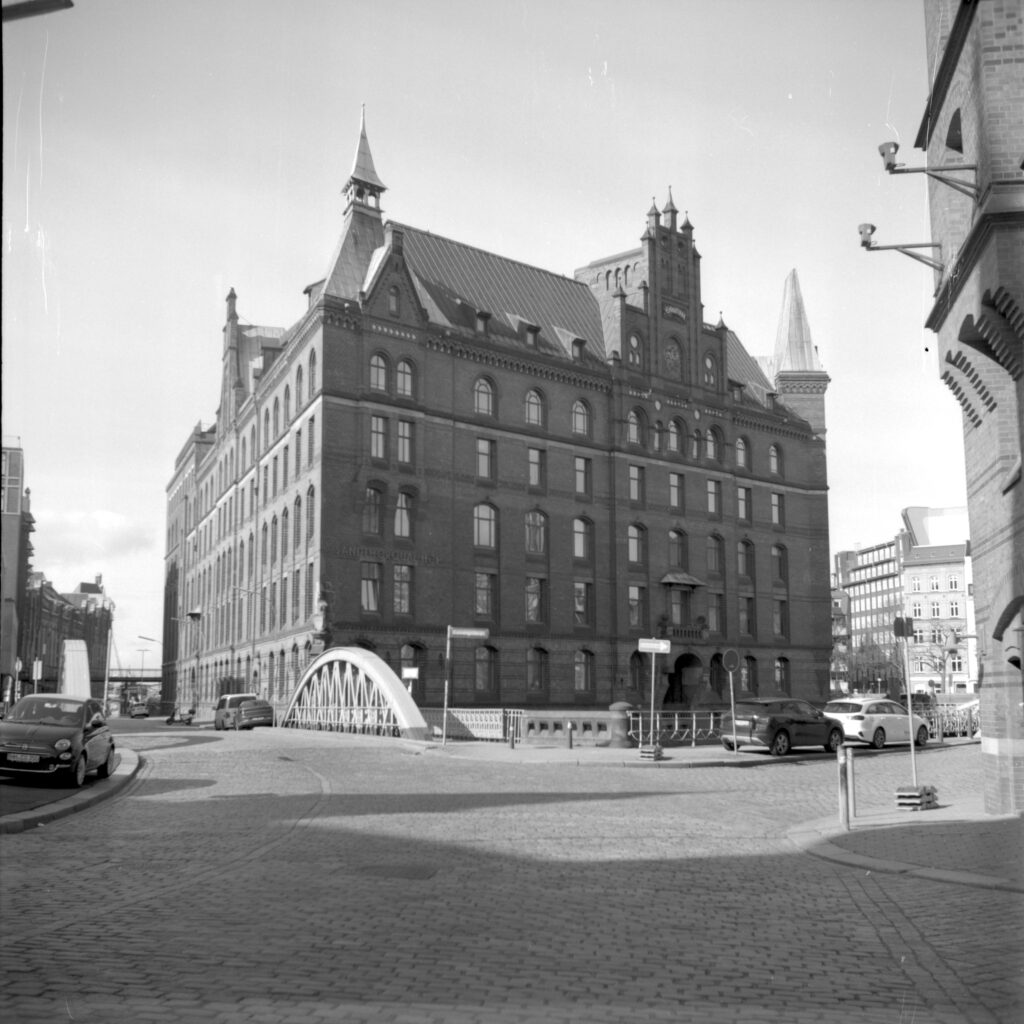
Delta 100 processed in Ilfotex DD-X. Exposure by Gossen Mastersix
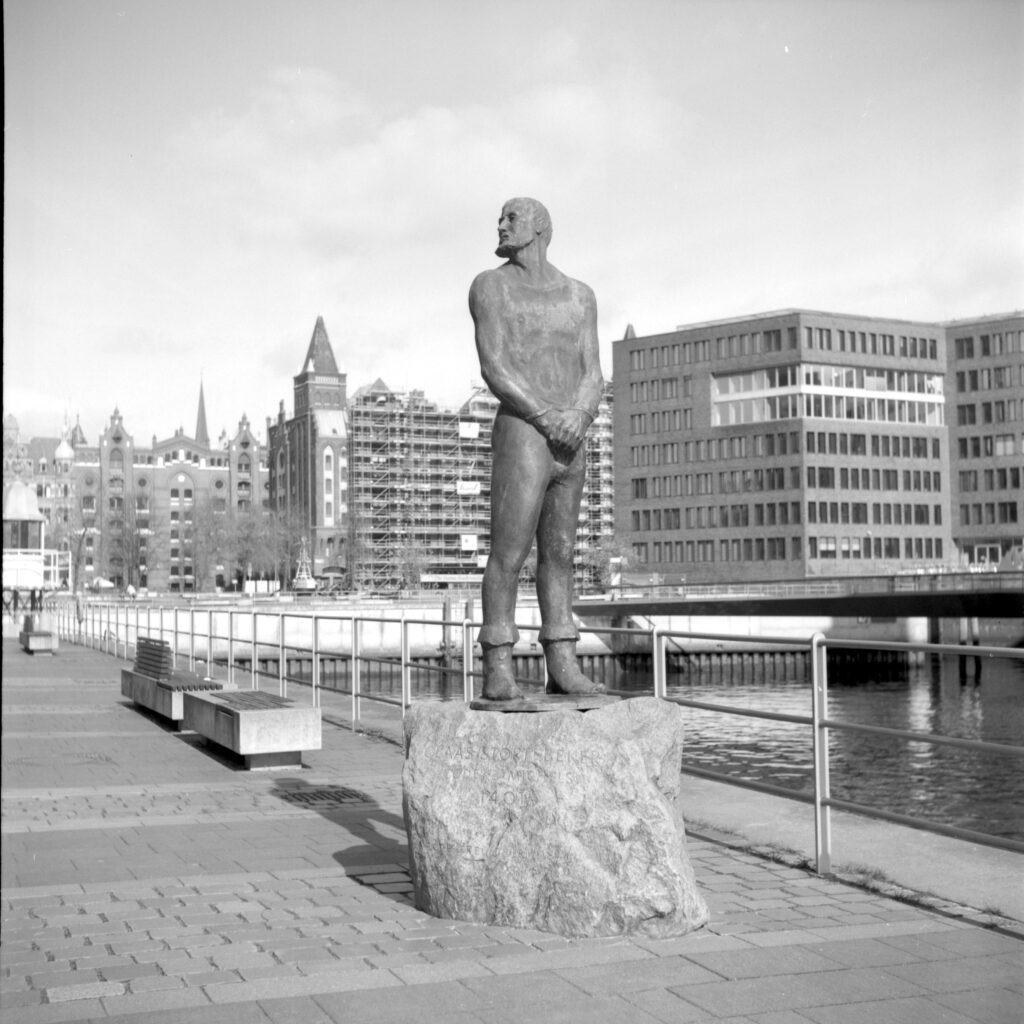
Delta 100 processed in Ilfotec DD-X. Exposure by Gossen Mastersix
Unfortunately, I do not have records of the actual exposure data, this was lost when my phone, on which I run a photo tracking app, failed and the data was lost.
However, the frames are well exposed, sharp and the shutter seems to be operating pretty well for a 50 year old Chinese camera.
The lens’s colour rendition seems to be pretty good with little evidence of fringing or spherical aberration. There does not appear to be any vignetting of the taking lens in use, however it is apparent in the WLF. I always had to use the magnifier to ensure I had focussed correctly.
Definitely a camera that you have to take your time with. Hurrying gets results like this shown below!
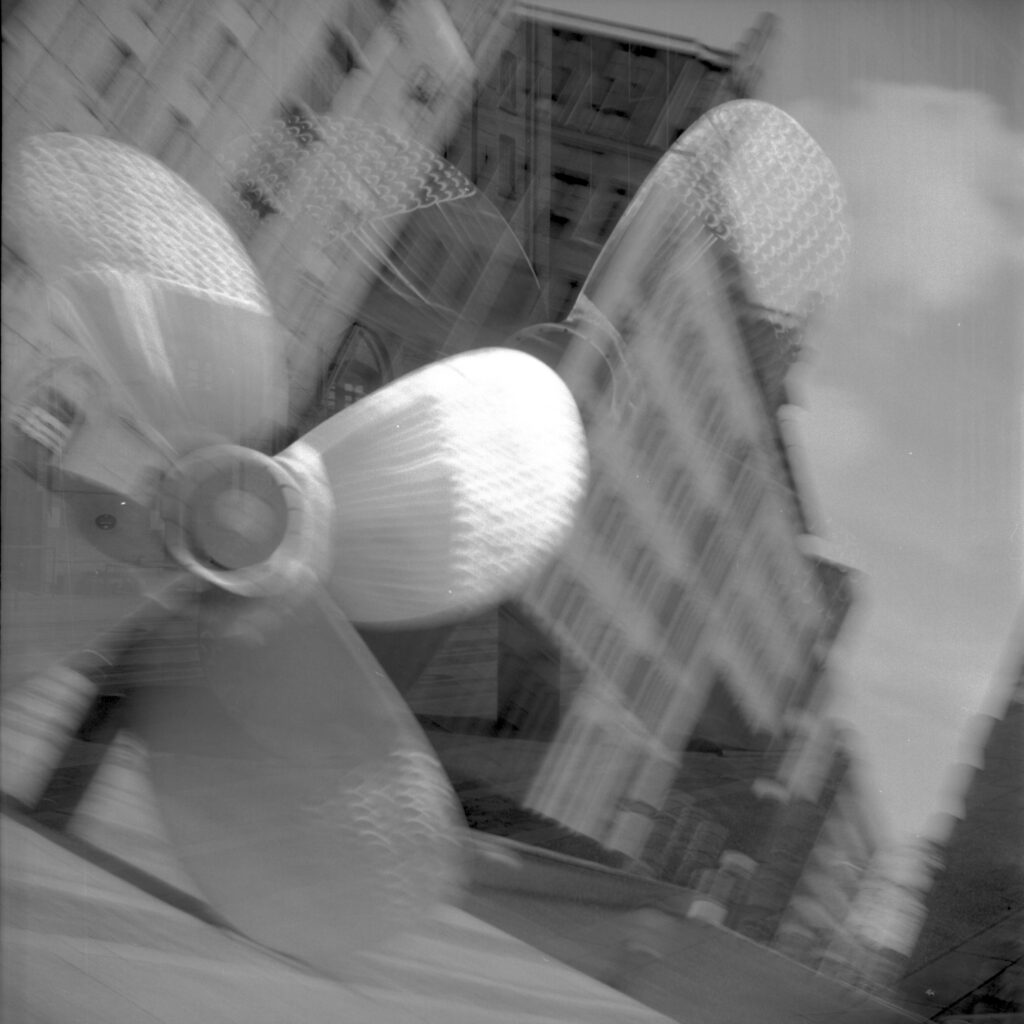
Caught the shutter cocking lever with my finger as I was turning away from the propeller!
It works best if used on a tripod, at least in my experience, as it is not then necessary to shuffle my hands around so much.
Bill Watts
Hamburg
Share this post:
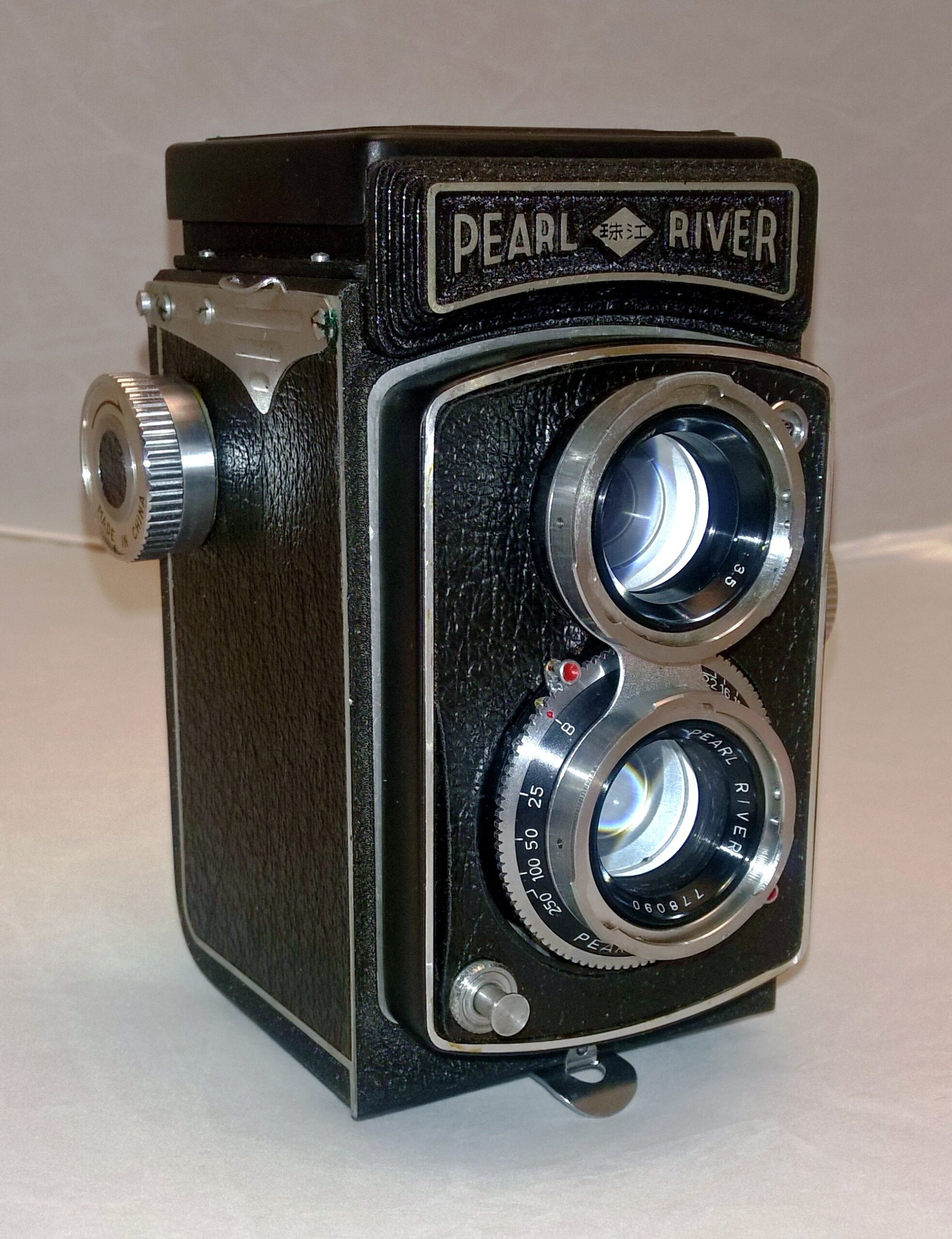
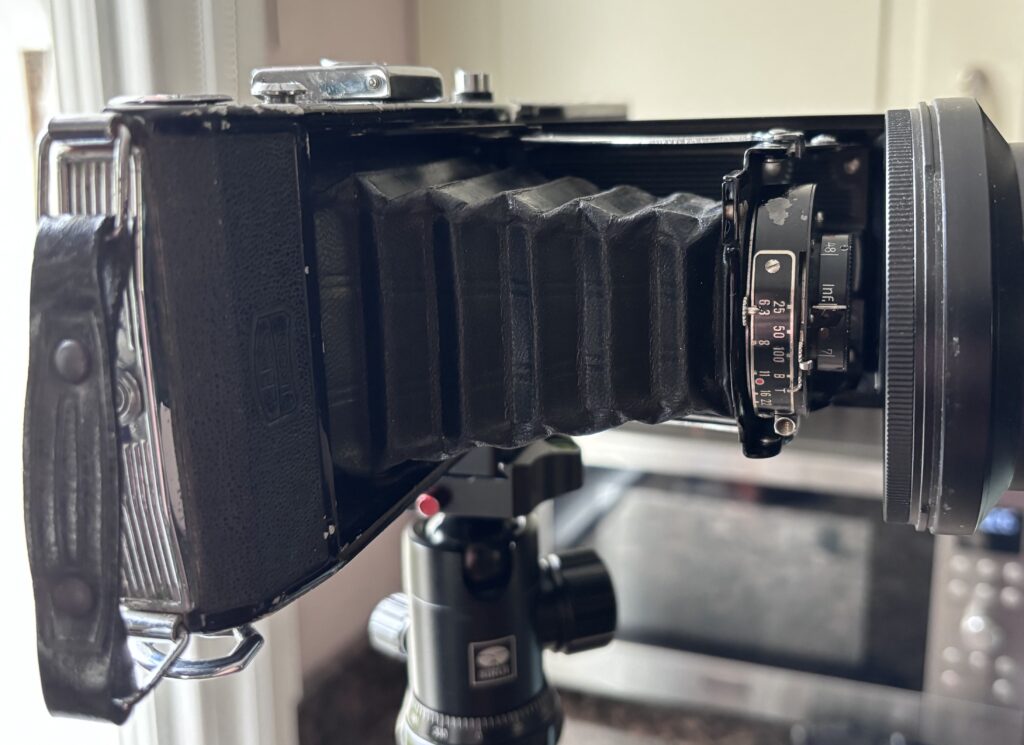
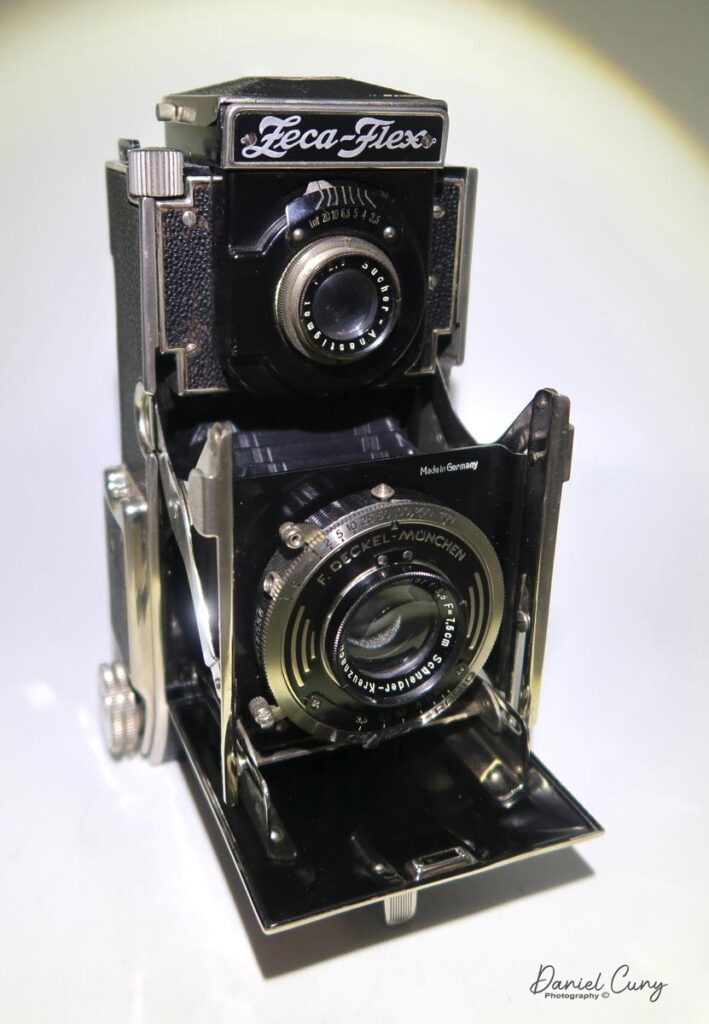
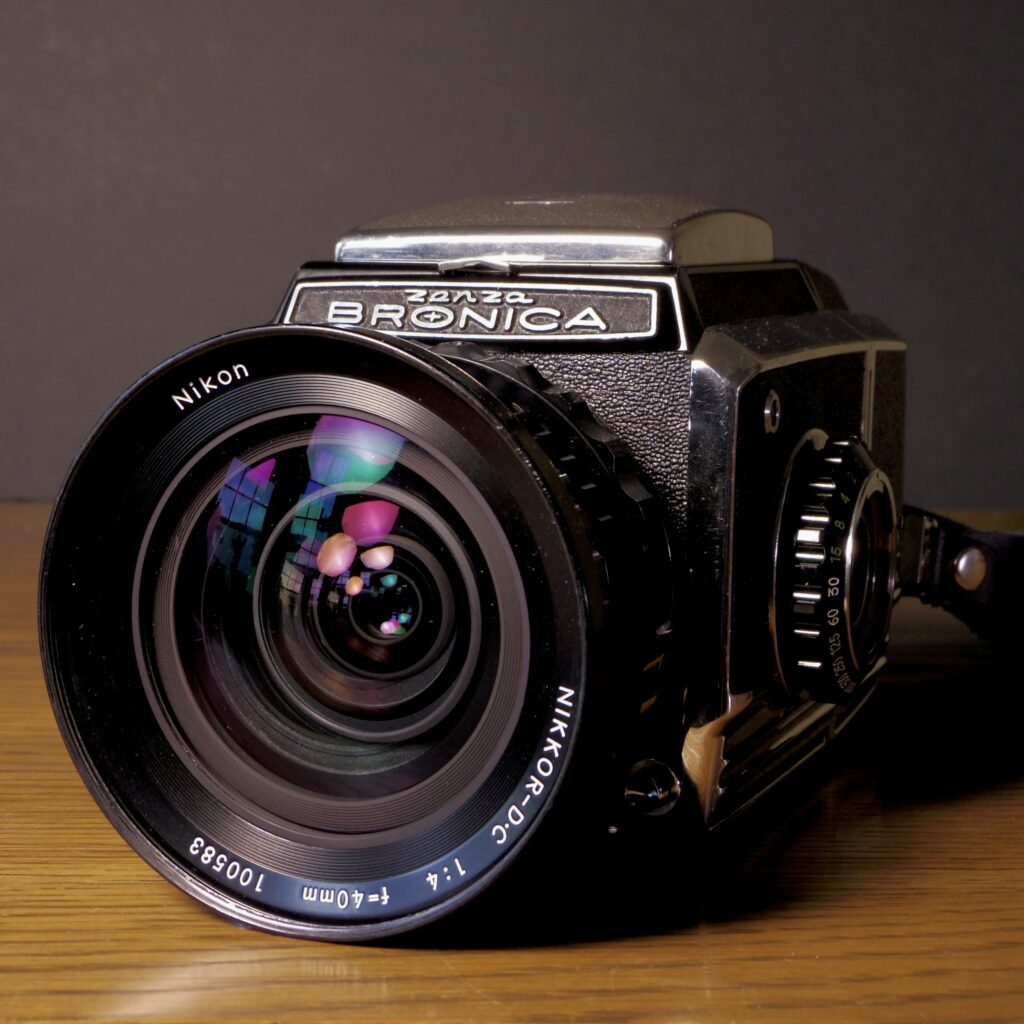





Comments
Charles Higham on Pearl River 4 – A Chinese TLR camera
Comment posted: 10/06/2024
Comment posted: 10/06/2024
Jeffery Luhn on Pearl River 4 – A Chinese TLR camera
Comment posted: 10/06/2024
Very well written article and nice pix! When I worked in Hong Kong for extended periods from 1985-1993 I saw some 'Red' Chinese cameras for sale at the many great Kowloon camera shops and at the big 'Mainland' department store on Nathan Road that carried everything made in China. The cameras were cheap. I bought a Leica copy and it fell apart right away. It sounds like your TLR is more robust! Thanks for the fascinating article!
Comment posted: 10/06/2024
Stefan Wilde on Pearl River 4 – A Chinese TLR camera
Comment posted: 11/06/2024
thanks for this wonderful post! I love it!
I was amazed to learn that these TLRs were valued items and pro cameras in their day in China. I first saw one in 1982 or 1983 in a "1000 Töpfe" store in Hamburg. That chain of hardware stores sold cameras and they advertised Seagull TLRs at bargain basement prices. I was just getting into photography and lusted for a Canon AE-1 program such as my wealthier friends had. Not knowing the first thing about medium format and photography in general I dismissed the Seagulls as hopelessly outdated curiosities for people who had even less to spend than I. Ignorance of youth...
Next time I was reminded of them was when I found a dirt and dust covered Seagull 4BI in our basement on a heap of items my neighbors wanted to discard. I picked it up and asked my neighbor if I could keep it and if he wanted money for it if it turned out to be working. He just wanted to see the back of it. The 4BI is also a Rolleicord-inspired device, with a slightly more impressive shutter, but generally a little less nicely finished than your beautiful Pearl River (Plastic knobs for film transport and focusing instead of metal, filter threads instead of bayonets). But it works nicely, without film, that is. Still need to run a roll through.
What also struck me where your images - I live in Hamburg and you took your pictures at one of my favourite grounds for photo walks! Gorgeous, wonderful! I love the shot of the propeller - it looks as if it were spinning and whirling through the picture, you accidentally brought it back to life!
Re stability and tripods - do you use a neckstrap? I found that they are an essential part of the shooting process, where you steady the camera against your body, ever so slightly pulling the strap down. I have taken pictures at relatively slow speeds that way and they turned out just fine. But maybe you already do that anyway. And sometimes the layout of the camera is so awkward even the neck strap doesn´t really cure it (looking at you, Ikoflex III).
Should you still be in Hamburg and happen to be interested in a photo walk with another TLR wielding person, I´d be delighted if you contacted me over at the real photographers forum. However, if you prefer to do your photography quietly contemplating your shots without someone to chat to, I would also fully sympathsize!
Thanks for posting!
Grüße von der Elbe an die Elbe!
Stefan
Comment posted: 11/06/2024
Comment posted: 11/06/2024
James Billings on Pearl River 4 – A Chinese TLR camera
Comment posted: 13/06/2024